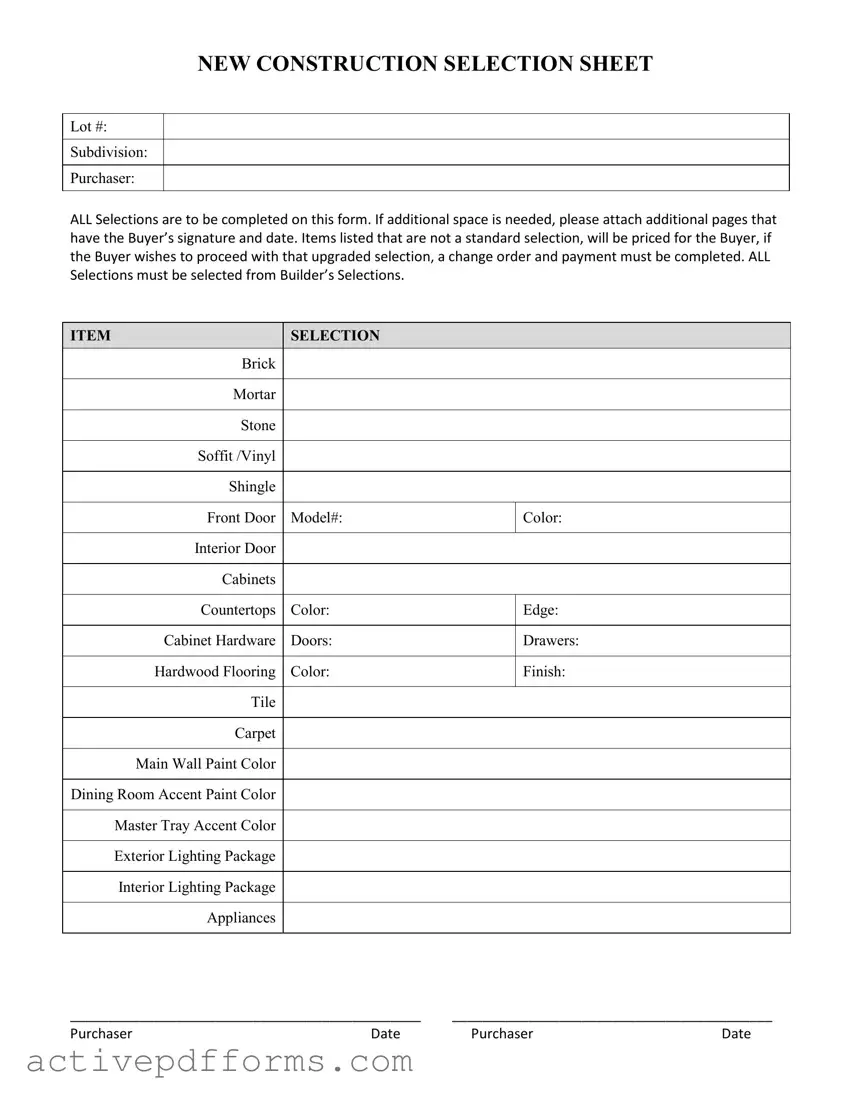Embarking on the journey of constructing a new home is both exhilarating and overwhelming, entailing numerous decisions that shape the final outcome. At the heart of this process lies the New Construction Selection Sheet, a crucial document that guides purchasers through the myriad of choices to be made. This form, acting as a comprehensive checklist, captures all the details ranging from the basic materials like brick, mortar, and stone to the more intricate selections including cabinets, countertops, and flooring options. Moreover, it serves as a record of the buyer’s preferences, ensuring that every choice, whether it's the model of the front door or the color of the hardwood flooring, is meticulously documented. For items not included as standard selections, the form facilitates a seamless process to price and select upgrades, requiring a change order and payment to proceed. This selection sheet underscores the importance of careful decision-making, as it records not just the aesthetic preferences but also the functional aspects of the new construction, ensuring buyers and builders are aligned in their vision. Highlighting the importance of these selections, the document mandates that all choices be made from the builder’s selections, with any add-ons clearly noted, priced, and authorized by the buyer, thereby serving as a binding agreement that captures both parties' consent and expectations.

